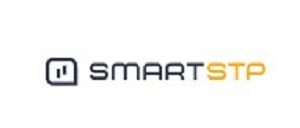Traders who take advantage of short, short, and immediate price changes in the financial markets through trading Strategies tick charts have now made this method a must-have. This fast-paced method of trading is most commonly used by day traders and high-frequency traders who target making small money on many transactions. Though trading tick charts does have the ability of high rewards, it also demands a thorough knowledge of market functioning, a well-thought-out plan, and a very quick decision-making process.
In this blog, we will delve into the essence of tick trading, the methodologies that the best traders use, the tactics that bring about the accomplishment, and the tools that are crucial to be proficient in this rapidly changing environment.
What is Tick in Trading?
Tick trading is a trading strategy that involves high-frequency trading where traders engage in buying and selling of the instruments based on tiny price movements or “ticks.” A tick is the smallest possible price movement that an asset can experience in a particular market, and this trading Strategies style is oriented more toward small price changes that lead to profit than by abiding by the longer-term trends.
Tick by tick chart for day trading generally strive on shorter frequency time frames (1-minute or 5-minute) and try to locate the moving prices that change by minor amounts in a very narrow time interval. Given that their trading style is related to computers that trade autonomously, it is often believed that tick trading is done mainly by traders who have advanced setups.
Key Characteristics of Tick Trading
- Short time frames: Tick trading is conducted over minute to minutes, sometimes as fast as seconds.
- The highest frequency: Traders can do multiple trades a day, to profit only slightly each time.
- Volume-proportional: It necessarily assumes very high liquidity in the market to allow quick and efficient entry and exit points.
- Low-risk, low-reward: The per-trade risk is usually less, but the gain is also not that high, so the trader has to go with many trades to get considerable returns.
The Basics of Tick Trading
Understanding the Tick Size
A tick size is the minimum measurement of price up or down movement on a specified market. For instance, in the Futures market, a tick could be as small as 0.25 or 1 point, depending on the asset being traded. Knowing the tick size is the primary step for successful tick trading as it sets the minimum movement required that can cause a profit or a loss.
Why Tick Trading Works
Tick trading is a kind of strategy that is used to exploit the very small price changes that go on in the market during the trading day. The price variations that happen in the forex market are mainly due to a lack of market equilibrium, the announcement of news, economic reports, or even traders’ emotional reactions.
Tick traders generally employ technical analysis to identify the patterns and indicators that foretell a quick price change. On the high-frequency trading algorithms base or with the manual trading strategies, tick traders seek to take advantage of the minor price movements to make a profit.
Tick Trading Strategies
Successful tick traders rely on well-defined strategies that help them identify the best entry and exit points. Here are a few proven tick data trading strategies:
1. Scalping Strategy
Scalping is indeed among the most sought-after tick data trading strategies. It deals with carrying out a significant number of small trades in a brief moment. Typically, scalpers hold their positions for seconds to minutes, and their achievement is to get a small profit from every trade.
Scalping’s Main Elements:
- Liquidity: Scalpers are in need of markets with high liquidity, and the price movements would be quick and clear.
- Small Timeframes: Scalpers usually use 1-minute or 5-minute charts to find the price changes very fast.
- Low Spreads: The very tight spreads are strongly necessary for scalpers to avoid it the high transaction costs consuming their profits.
2. Momentum Trading
Momentum trading Strategies is the trading method where you try to ride the strong price movement in a certain direction. In this tactic, the tick traders seek advantage of the short-term trends by taking positions at the time of the momentum build-up and leaving the market before the start of the slowing-down phase.
Key Aspects of Momentum Trading:
- Volume Indicators: Traders use volume indicators to confirm that a price movement has sufficient momentum.
- Trend Identification: Momentum traders use tools like Moving Averages or RSI. It is to identify the strength of a trend.
- Quick Entry and Exit: Speed is key, as momentum can shift rapidly.
3. Range Trading
Range trading Strategies works best tick chart for day trading in those markets that are in a state of price relative stability, and therefore, price movements are likely to be limited to a certain permitting area. Tick traders want to engage in the activity of buying at the lower end of the range and selling at the higher end, which is done over and over again during the period when the market is going up and down.
Key Aspects of Range Trading:
- Support and Resistance: The support and resistance levels are the most significant determinants for range traders to indicate the top and bottom range of the trading range.
- Oscillators: Effortless tools like the Stochastic Oscillator can give an idea of whether the range is overbought or oversold.
- Frequent Trades: As tick trades are not based on significant price changes, range traders have to be able to find a lot of opportunities within the specified range.
Tools for Tick Trading
Tick trading requires specialized tools to help traders make quick decisions and monitor price changes. Below are some of the essential tools that tick traders use:
1. Trading Platforms
A trader’s platform always serves as an important accessory to any tick trader. It provides instant trade execution, real-time data access and also helps in the observing of price movements.
- MetaTrader 4/5: Highly rated platforms for retail traders, these places feature the best charting and customization options.
- NinjaTrader: The platform of choice for its professional features and strong performance in charting.
- TradingView: A platform that can be run on the internet and is exceptional for technical analysis and strategy development.
2. Algorithmic Trading
For those who desire to trade at a higher speed, the use of algorithmic trading or fully automated trading systems may be a turned game for them. These are the program that performs trading by themselves based on the given rules, thus enabling traders to benefit from tiny price variations without the need to follow the market at all times.
- AlgoTrader: A platform that allows for fully automated trading strategies.
- TradeStation: Known for high-quality algorithms and backtesting features.
3. Charting Software
Tick traders rely heavily on technical indicators and price charts to identify potential trade setups. Some of the best charting tools include:
- Bollinger Bands: To measure volatility and potential price breakouts.
- Relative Strength Index (RSI): To spot overbought or oversold conditions.
- MACD: To track momentum and price convergence/divergence.
Risk Management in Tick Trading
Since tick trading involves a large volume of trades with small profit margins, risk management is crucial for success. Without proper risk controls, traders can quickly wipe out profits due to unexpected price movements. Here are a few essential risk management strategies:
1. Use Stop-Loss Orders
2. Position Sizing
3. Stay Informed
Conclusion
Tick trading is an exciting and potentially profitable method to challenge the markets, especially for those who thrive in a fast-paced environment. By using the right plan, cutting-edge tools, and strict risk management, tick traders are able to take advantage of small price shifts and make money reliably. But just like in other trading strategies, knowledge, experience, and patience are prerequisites for success.
Through the use of tricks and methods as clarified in the article, you are venturing into the adequacy in tick trading, which you will soon achieve in the whirlwind of financial markets.
FAQs
1. What is a tick in trading?
A tick is the smallest price movement an asset can make in a market.
2. What are ticks in trading?
Ticks represent the minimum price increment in which a traded asset can move.
3. What is a tick in futures trading?
In futures trading, the term tick is the minimum journey of price that is permissible for a particular agreement.
4. What is a tick chart in trading?
A tick chart plots price movements based on the number of trades executed, not time.



